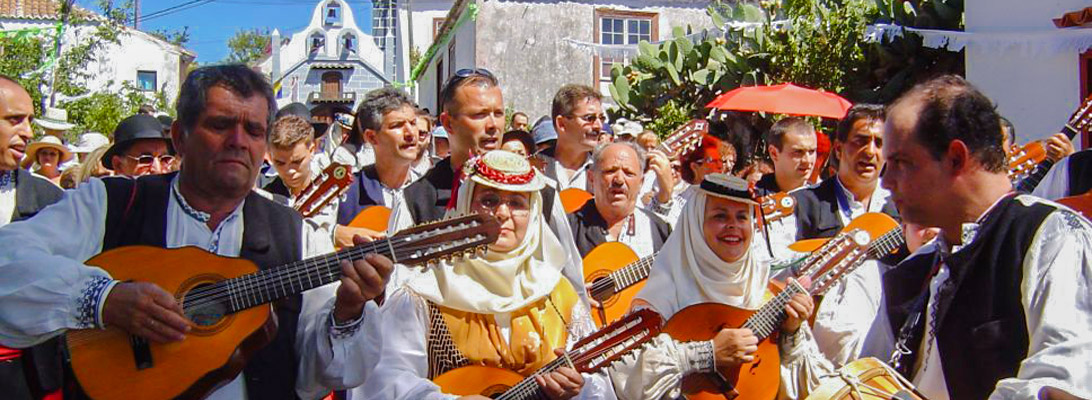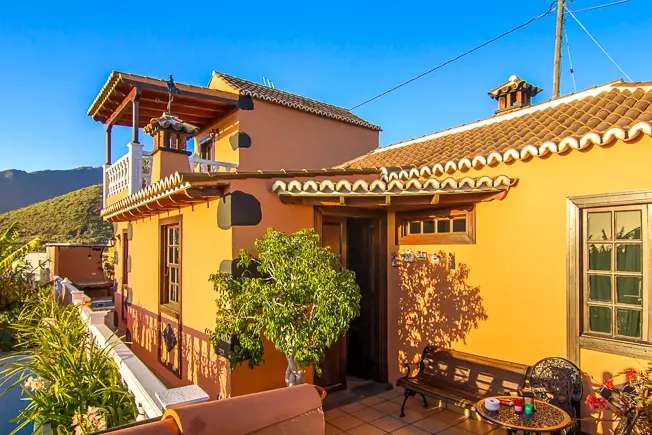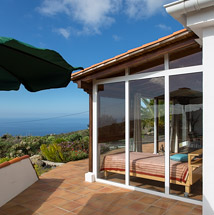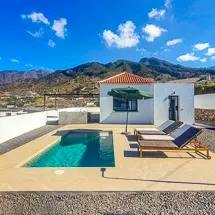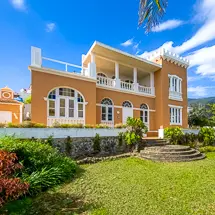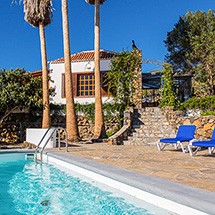The music on La Palma is characterized by European and South American influences. Prehispanic musical traditions have probably been preserved in the rhythmic "Sirinoque", a dialogue in dance and song between man and woman. The names of well-known pieces of music partly reveal their origin: Habaneras, Polca, Mazurca, Berlina, Malagueña, Aires de Lima and others. The wheat dance (Danza del Trigo), the Cho Juan Perenal or the Punte Cubano or ten-line singing, in which several poets improvise in competition, are truly palmeric.
Traditional Folk Music from La Palma
Traditional folk music from La Palma Traditional Palmeric folk music is usually performed by a mini guitar (timple - a four-string lute), guitar, flute, drum, and castanets. Famous folklore groups are called "Coros y danzas" (Santa Cruz), "Los Viejos", "Virgen de las Nieves", "Echentive" (Los Canarios), "Cumbre Nueva" (El Paso; performs in the hotel "Sol La Palma" in Puerto Naos) or "Tuhoco" (Las Breñas). The male choir "Los Arrieros" is regarded as one of the best folklore groups. The Mariachi Orchestra from Tazacorte with accordion, brass, and violin, which likes to play in restaurants, can't be overheard either.
Rock, Pop and World Music from La Palma
Modern Palmeric music groups are called "Taburiente", "Paraíso Animal", "Tirimara" or "Eso Es" (meanwhile dissolved and partly merged into "Bota de Actor"), "Cuartoson" or "Vrandan" and many more. Well-known singers are Ima Galguén, Ramón Betancor, Kena, Jorge Guerra, and Lorena Orriba. Many of them combine elements of traditional folklore with world music, Andalusian, South American or African influences.







